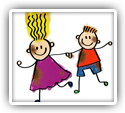
Special Needs Children Helped with Chiropractic - A Case Series
Print Article

On June 16, 2016, the Journal of Pediatric, Maternal & Family Health published a case series documenting the positive effects of chiropractic care for eight special needs children. The study authors report that the number of special needs children is continuing to rise at an alarming rate. "More children each year are being diagnosed with neurodevelopmental challenges ranging from Autism, Attention Deficit Hyperactivity Disorder and Sensory Processing Disorder."
The study reports that the rate of autism has risen from 1 in 5000 in 1975, to 1 in 88 as of 2008. The rate of ADHD has risen 16 percent since 2007 to the present where current estimates show that around 10 percent of children ages 4 to 17 are being diagnosed with the condition. The number of children enrolled in Special Ed programs has risen 30 percent in the last 10 years and currently is at 13 percent of all school age kids being in these programs.
In this study, eight children with a variety of special needs were studied to see the results of chiropractic care. Four of the children were seen at a chiropractic university clinic, and four were seen in one of the author's private practices.
Each of the children received chiropractic care for the correction of subluxations that were determined to be present. Each of the eight children showed improvement for their respective neurological issues.
These issues included a 11-year-old girl who had difficulties with reading comprehension, handwriting, and mathematics. After chiropractic care, it was reported that she has now been selected to be tested for the honors program. Two sisters, ages two and four, were suffering from anxiety and speech delays. After chiropractic care, the study documents that the two-year-old girl had improved to the point where she can now be in daycare, and the four-year-old no longer needed speech therapy and was accepted into a prestigious preschool program.
In their summary the authors noted, "Seven out of eight showed improvement that drastically reduced or discontinued one or more other services that they had been a weekly part of their care." One child with Cerebral Palsy showed good improvement but limitations prevented the marked improvements seen by the other children in this study.
Print Article

